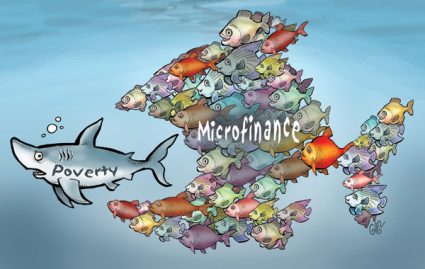Private sector is clutching up to deliver free market lending solutions: this time with small businesses!
June 12, 2017
By: Bobby Casey, Managing Director GWP

Not long ago, I wrote about the free market solutions emerging for the healthcare industry. Doctors and medical centers are coming up with ways to provide affordable care and treatment without the government or insurance companies. It’s not a NEW thing. It used to be the norm. But this is a big deal for folks in the United States now who want to see it make a come-back.
Likewise, getting a small business loan to either get started or get to the next level is important. Great ideas can be great investments, after all. And just as Uber and Lyft freed us from the taxi monopoly, peer-to-peer lending has rescued and helped many from the traditional banking industry.
This too, is by no means a new concept. There are various forms of private funding that don’t require a bank. One such alternative is called micro funding (also: micro lending or micro financing). This is a common option in third world countries in which the average farmer or small business cannot get access to typical lines of credit. There is risk, but the interest rates are considerably higher than usual loans because this.
What usually happens is, multiple non-bank lenders pitch in a portion of the total loan; but they do this with several borrowers. It mitigates risk for the lenders, but also can result in some handsome returns for them. One site that facilitates these loans this is Kiva. Kiva is fast approaching the $1 billion mark in lent funds to third world countries for everything from clean energy and water causes, to small business development.
The fact that it is a loan rather than a grant or charitable donation means that the model they use on the borrowers’ end must be sustainable enough to generate a profit from which to repay the loan. If their plan fails to meet that criteria for enough potential lenders, they might not get their loan amount.
I would like to pause and just acknowledge what a tremendous testament this is to the benefits of free market capitalism! Progress is possible because capital is circulating. For those who think that wealth is a stagnant zero sum pie, it most certainly is not. Yes there are rich and poor people; and there is everyone in between. But the important thing to remember is, much like in the job market, movement is fluid and dynamic… or at least it can be if the market is allowed to grease the wheels a bit.
This happens in the United States as well, and technology has been a key player in making it successful. Two major companies that facilitate this are Prosper and Lending Club. In the same way as Kiva – and what is considered “humanitarian microfinancing” – multiple lenders finance a single loan for a higher interest rate. In some cases, the borrower has less than perfect credit. But in many other cases, the borrower simply isn’t looking finance enough to qualify for a typical bank loan.
In all cases, the lender always get to review the circumstances surrounding the loan and decide for themselves if they feel comfortable with the level of risk.
Thus far Lending Club has facilitated close to $2 billion in loans in the past quarter alone, and an astounding $26.6 billion since its inception. Prosper has facilitated approximately $9 billion in private loans.
The peer-to-peer economy is a fantastic thing. Given the advancement of technology and the internet, this has become both empowering and a solid response to the popular and recurring question: “Who will do X, if we don’t stick to the traditional methods of commerce?”
The answer is: someone will. I don’t have to have that answer, nor do I need to be that person. But the success of the peer-to-peer economy is substantial proof that things will continue to get done without large conglomerates or government.
In fact, Amazon offers lending services now! It’s not a microfunding model. It’s just private lending. However, in the past year, Amazon has lent out approximately $1 billion to more than 20,000 small business throughout the US, UK, and Japan. That seems like a good fit considering all the small business proprietors that operate using their platform.
That there is competition means great news for borrowers, but that also means great opportunities for lenders.
I’m not advocating one way or another about taking out lines of credit. A certain amount of borrowing is to be expected, however, in growing a business, or even meeting an immediate need that can later be paid back. The cool part of this, though, is that you don’t need to be a multimillionaire to lend, and you also don’t need to be a contestant on Shark Tank to borrow.
There are pros and cons to everything. This is just an alternative to having large intermediaries involved in business. Microfunding has been happening for decades but not on the scale that it is now, and certainly not within the developed world as much as the third world. Despite the risks, this is still growing in popularity not just in the United States, but throughout the world in places like Italy, the Netherlands, China and Japan.
I like seeing competitive alternatives to doing business. Nothing is a sure thing, but there is something to be said for people having faith in cultivating a new way, and collaborating to meet that end.
Click here to schedule a consultation or here to become a member of our Insider program where you are eligible for free consultations, deep discounts on corporate and trust services, plus a wealth of information on internationalizing your business, wealth and life.

